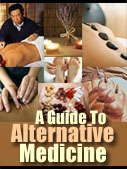Apitherapy
Apitherapy
Bee Therapy is the treatment of ailments with the use of products
made from the common honeybee's venom and honey.
These medicines include bee pollen, raw honey, propolis and royal
jelly. Although scientific studies have not proved the theories that apitherapy works,
products like royal jelly have become an increasingly popular item sold on convenience store
counters as an energy serum and made into beauty products.
Hippocrates used the venom from bees to treat joint ailments such
as arthritis, and a more modern day doctor Phillip Terc claimed that bee stings help
rheumatism in an article written in 1888.
There are five basic honeybee products:
Venom
Is either injected by needle or allowing the bee to sting the
affected area. This is the most complex form of apitherapy and the only one where you must
consult a practitioner. Users say the benefits far outweigh getting repeatedly stung by
bees.
Patients presenting with tendonitis, for instance, can be helped
with two or three sessions, whereas the pain associated with degenerative bone diseases can
only be alleviated through several sessions a week for at least six months.
Be sure to get an allergy test for beestings before attempting
this form of therapy. The venom contains natural anti-inflammatory chemicals which are more
potent than, say, hydrocortisone for tendonitis and arthritis.
Pollen
Has been found to be a good treatment for seasonal allergies, and
is commonly marketed as an energy supplement. Pollen is often used in bee beauty products and
is believed to slow the aging process, although there exists no scientific evidence to
support this claim.
Raw honey
Is full of "b" vitamins (no pun intended!) and is a quick energy
booster, like cane sugar or fructose. This is not processed honey-it has not been filtered or
heat treated-and there are actual studies showing that putting a poultice of raw honey on an
open wound can dramatically slow the spread of infection causing bacteria.
Royal Jelly
Is produced in the salivary glands of the worker bee in order to
feed the queen, hence the name. Because this milk white substance is thought to help the
queen live so long and make her more fertile, products made from royal jelly are marketed for
beauty supply. While these claims are unsubstantiated, studies on humans found that royal
jelly can lower levels of cholesterol.
Bees can make their own glue to stick their hives together and
repair the walls. This bee glue is called Propolis and is made from the sap of
conifers or poplar trees.
Products made from bee materials for the purpose of creating
salves and chap sticks are made from propolis. It is also considered by apitherapy
enthusiasts to be an antioxidant.
Other reported health benefits are the breaking down and softening
of scar tissue as a cosmetic application, the decrease of fatigue and spasms associated with
suffers of MS, and the antitoxins can be beneficial in keeping AIDS patients from contracting
flu's and viruses.
Apitherapists have no licensing requirements or credentialing
organizations. Some are physician's who believe that it works to lessen joint pain in their
patients, most that use it are or once were patients of apitherapy themselves.
The most important precaution you can take before exploring this
option for treatment is to get an allergy test. If you have a reaction to the bee pollen
often used in juice bar health drinks, you are probably allergic to bee pollen and should
forego this type of treatment.
If you have heart disease
or diabetes you should not seek apitherapy, and never give any type of honey to
infants.
Raw honey may contain fungus, so the AIDS patients that might be
helped through the propolis antioxidants could be harmed through the use of unprocessed
honey.
Lastly, there are no recommended dosage standards, so exercise
caution when first starting to experiment with the benefits of apitherapy.
|























